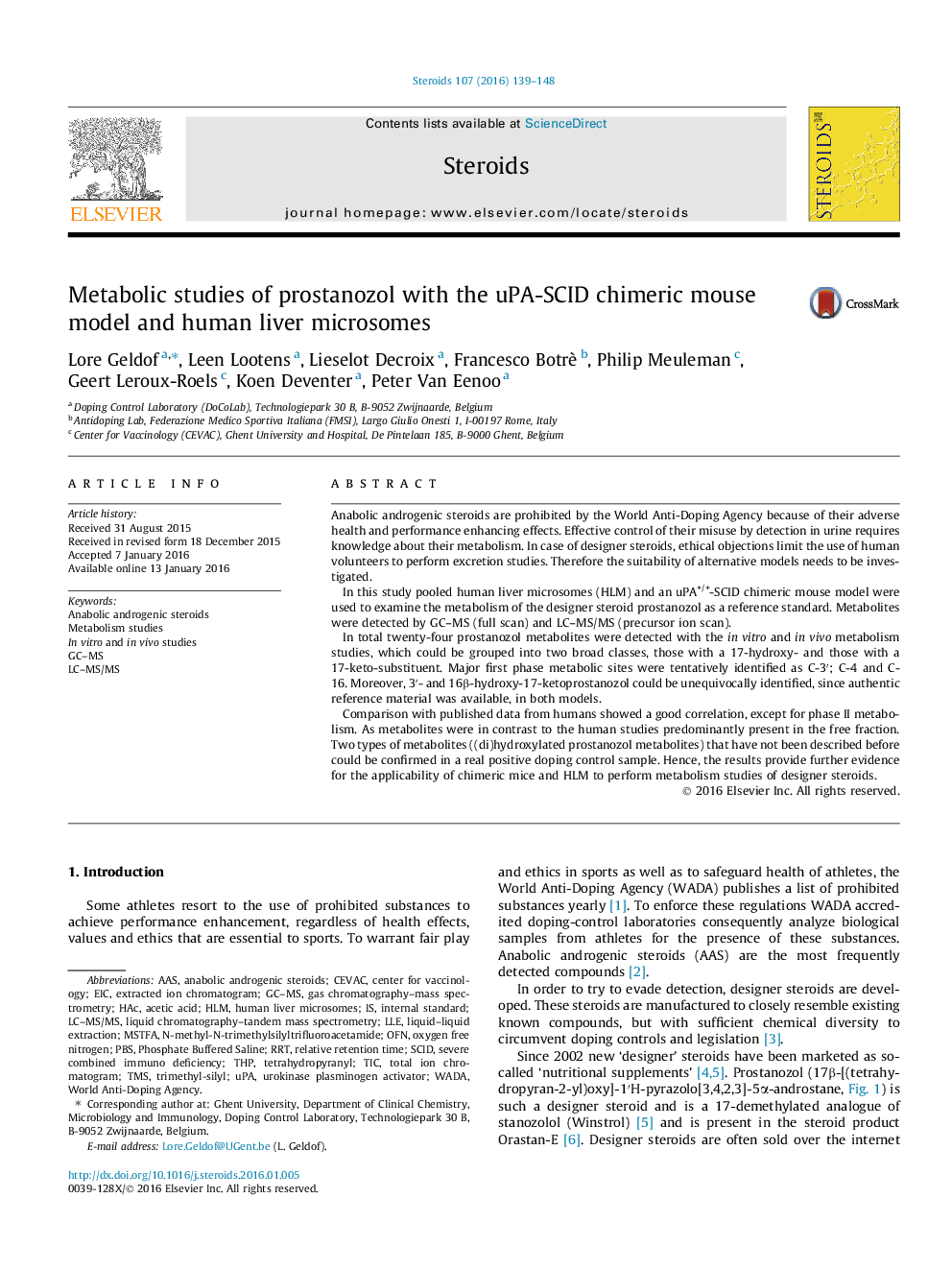| کد مقاله | کد نشریه | سال انتشار | مقاله انگلیسی | نسخه تمام متن |
|---|---|---|---|---|
| 2029143 | 1542701 | 2016 | 10 صفحه PDF | دانلود رایگان |

• Metabolic studies of prostanozol: steroid product and reference standard.
• Seven categories of prostanozol metabolites detected, two new categories described.
• Comparison by reference material: 16β- and 3′-hydroxy-17-ketoprostanozol identified.
• Chimeric mice and human liver microsomes valuable tools for metabolism studies.
Anabolic androgenic steroids are prohibited by the World Anti-Doping Agency because of their adverse health and performance enhancing effects. Effective control of their misuse by detection in urine requires knowledge about their metabolism. In case of designer steroids, ethical objections limit the use of human volunteers to perform excretion studies. Therefore the suitability of alternative models needs to be investigated.In this study pooled human liver microsomes (HLM) and an uPA+/+-SCID chimeric mouse model were used to examine the metabolism of the designer steroid prostanozol as a reference standard. Metabolites were detected by GC–MS (full scan) and LC–MS/MS (precursor ion scan).In total twenty-four prostanozol metabolites were detected with the in vitro and in vivo metabolism studies, which could be grouped into two broad classes, those with a 17-hydroxy- and those with a 17-keto-substituent. Major first phase metabolic sites were tentatively identified as C-3′; C-4 and C-16. Moreover, 3′- and 16β-hydroxy-17-ketoprostanozol could be unequivocally identified, since authentic reference material was available, in both models.Comparison with published data from humans showed a good correlation, except for phase II metabolism. As metabolites were in contrast to the human studies predominantly present in the free fraction. Two types of metabolites ((di)hydroxylated prostanozol metabolites) that have not been described before could be confirmed in a real positive doping control sample. Hence, the results provide further evidence for the applicability of chimeric mice and HLM to perform metabolism studies of designer steroids.
Figure optionsDownload as PowerPoint slide
Journal: Steroids - Volume 107, March 2016, Pages 139–148